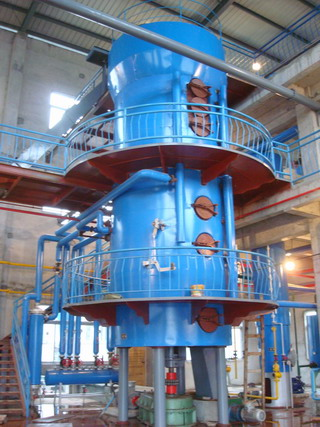
I. Function & PurposeThe DTDC is essential in oil extraction plants fordesolventizing wet mealandinactivating anti-nutritional factors. It integrates desolventizing, toasting, drying, and cooling into one unit, ensuring simple operation and stable product quality. It processes solvent-laden wet meal from leachers.II. Working PrinciplePre-desolventizing Layer: Indirect steam heats wet meal, evaporating partial solvent.Desolventizing-Toasting Layer: Direct steam accelerates solvent evaporation. Agitation and negative pressure enhance desolventizing.Drying Layer: Hot air reduces moisture content.Cooling Layer: Cools meal to near ambient temperature for storage/transport.III. Technical FeaturesSteam-Permeable Trays: Ensure even gas penetration without meal leakage, reducing direct steam usage.Automatic Discharge Valves: Maintain constant bed depth and adequate retention time.Roller-Bearing Sealed Gates: Ensure flexible, long-lasting operation and prevent solvent leaks.Wet Scrubber: Atomizing nozzles capture fine meal particles from exhaust gases.Offset Curved Agitators: Provide thorough meal mixing.IV. AdvantagesInactivates Anti-Nutrients: Destroys urease, trypsin inhibitors, etc., improving meal nutritional value.Controls Protein Denaturation: Enhances meal NSI (Nitrogen Solubility Index).Adjusts Color, Flavor & Particle Size.Minimizes Residual Solvent & Moisture: Ensures safe meal handling with low solvent consumption.V. Specifications & Technical ParametersModelCapacity (t/d)Power (kW)YФ 2500×730030YФ 3200×760055YФ 3600×7100090YФ 4000×91500132YФ 5000×92000220YФ 5000×113000250YФ 5600×114000315YФ 5600×135000250+90YФ 6200×146000280+110VI. SummaryThe DTDC excels as the optimal wet meal desolventizer in oil extraction plants. Its integrated design efficiently performs desolventizing, toasting, drying, and cooling. Unique features ensurelow solvent consumption,high meal quality, andenergy efficiency.
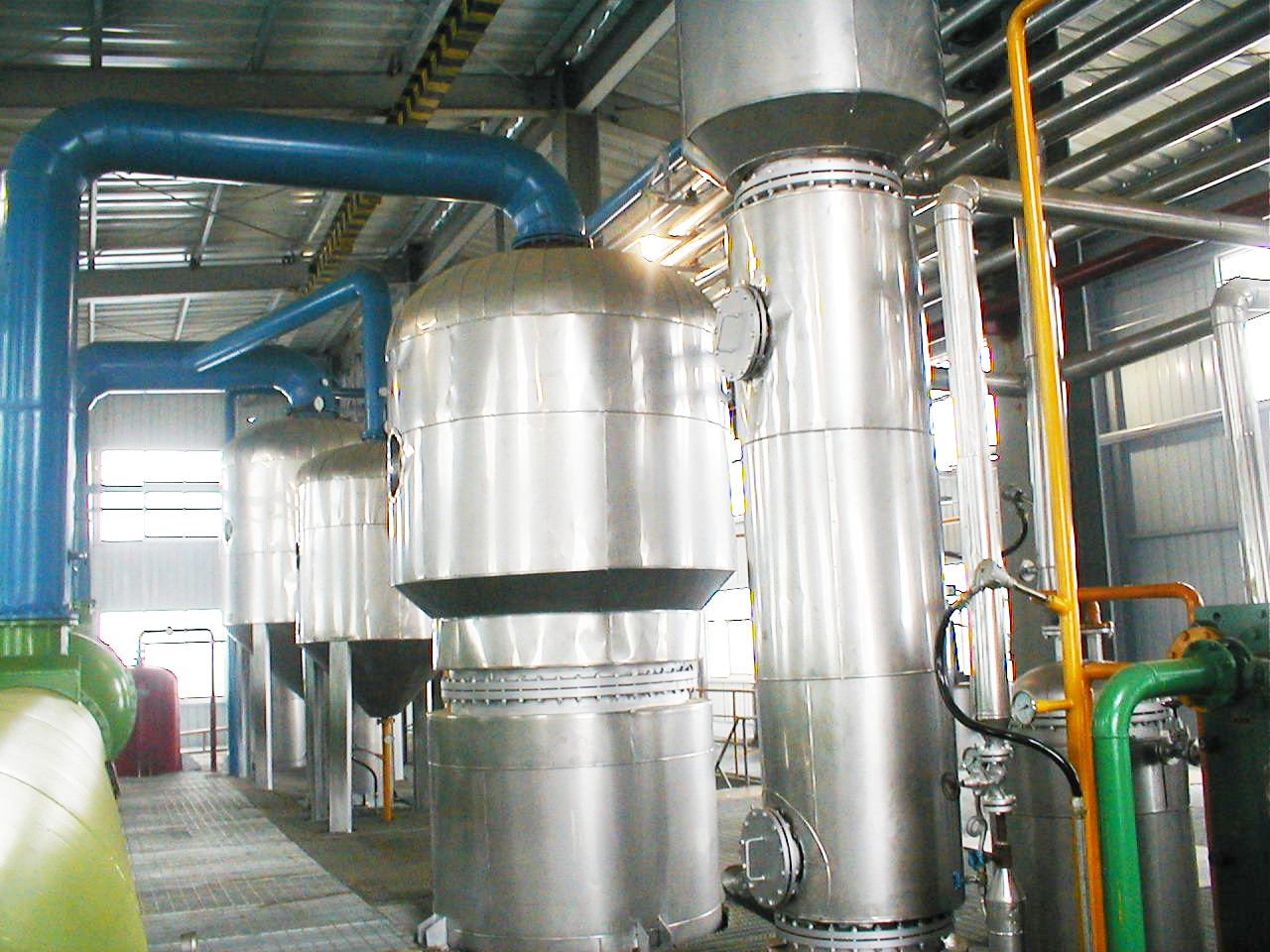
Core Function: Separates solvent from oil-solvent mixture (miscella) to produce concentrated crude oil.I. Working PrinciplePre-treatment: Miscella from leacher is filtered/centrifuged to remove solids.Multi-Stage Evaporation:1st Stage: Long-tube (rising-film) evaporator at 60–70°C → Concentrates miscella to ~60% oil.2nd Stage: 90–120°C → Concentrates to 90–95% oil.Steam Stripping: Residual solvent removed via direct/indirect steam in stripping column under vacuum.II. Technical FeaturesHigh-Efficiency Evaporation: Thin-film design in long-tube evaporators enhances heat transfer.Vacuum Operation: Lowers solvent boiling point, reducing energy consumption.Solvent Recovery: Vapors condensed and recycled.Progressive Concentration: Two-stage evaporation minimizes thermal damage.III. ApplicationsUsed in oil processing (soybean, rapeseed, sunflower) and solvent-liquid separation industries.IV. AdvantagesHigh Oil Purity: ≤0.1% residual solvent.Energy-Efficient: Vacuum + staged evaporation cuts steam use by 25–30%.Eco-Friendly: >99% solvent recovery rate.Low Maintenance: Robust design ensures continuous operation.
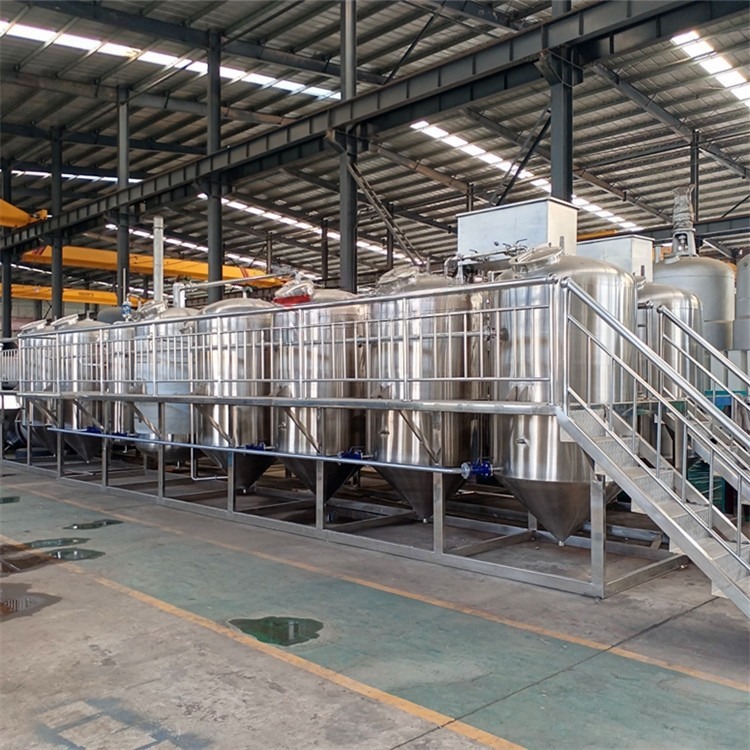
Function: Removes gum impurities (phospholipids, proteins, mucilaginous substances) from crude oil to improve quality, storage stability, and downstream processing efficiency.I. Working PrincipleBased onhydrophilicityof gums:Hydration Degumming:Hot water/electrolyte (NaCl, phosphoric acid) is added to heated oil (60–85°C) under agitation.Hydratable phospholipids swell, coalesce, and settle as sludge.Acid Degumming:Inorganic/organic acids (phosphoric/citric acid) remove both hydratable andnon-hydratable phospholipids.Ideal for high-purity oils (e.g., physical refining).II. Technical FeaturesHigh-Efficiency Separation: Optimized control of temperature, agitation (30–60 rpm), and water dosage (1–3%).Multifunctional Design: Integrates degumming & deacidification in one vessel.Automated Control: Real-time monitoring of key parameters (viscosity, pH, temperature).III. ApplicationsEdible Oils: Soybean, rapeseed, sunflower oil refining.Industrial Oils: Removal of gums & impurities.IV. AdvantagesAspectBenefitOil QualityReduces phosphorus to ≤10 ppm; improves NSI & oxidative stability.Cost SavingLowers chemical/energy consumption in downstream neutralization.Eco-FriendlyMinimizes acid/water usage; sludge byproduct recyclable for lecithin.ReliabilityRobust construction (SS304/316L); CIP-enabled; maintenance-free seals.Key Specifications(Typical Industrial Unit):Capacity: 5–100 tons/batchOperating Temp: 60–90°CResidual Phosphorus:<10 ppmAcid Consumption: 0.05–0.2% (acid degumming)Agitation Power: 0.5–5 kWCritical for producing food-grade oils meeting Codex Alimentarius standards.
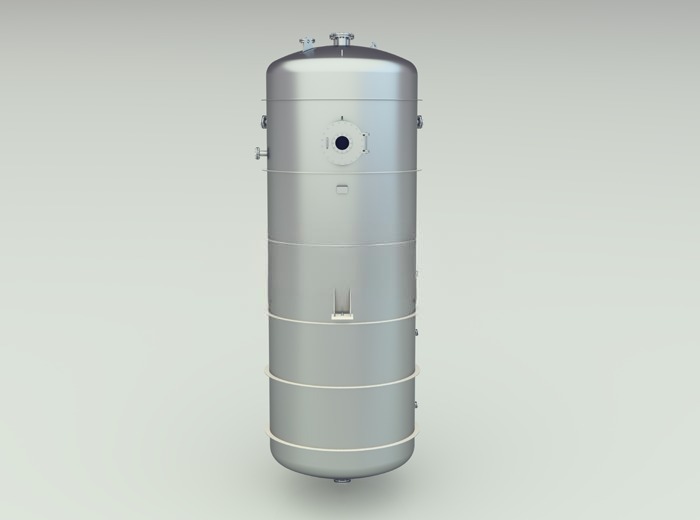
Function: Removes color, impurities, and odors from solutions via adsorption, chemical reaction, or physical separation.I. ApplicationsFood Industry: Sugar, MSG, glucose, starch syrup refiningPharmaceuticals: Intermediate purification, pyrogen removalChemicals: Dye intermediates, additives processingEdible Oils: Pigment removal during refiningII. Working PrinciplesMethodMechanismAdsorptionActivated carbon/clay traps pigments in microporesChemical ReactionDecolorizers (e.g., oxidants) break chromophores in high-COD wastewaterPhysical SeparationFiltration/centrifugation removes particulate impuritiesIII. Structural FeaturesVertical Enclosed Design: Prevents dust contamination.Custom Agitators: Low-noise, material-specific mixing (e.g., shear-sensitive biologics).Jacketed Heating: Steam/hot water circulation for optimal adsorption temperature (60–110°C).Insulation Layer: Cross-linked PE foam minimizes heat loss (<5% energy dissipation).Sanitary Construction:Mirror-polished interior (Ra ≤0.6 µm)Smooth radius transitions at all ports/sight glassesCIP-compatible, dead-leg-free designIV. AdvantagesAspectBenefitEfficiencyReduces color intensity by 90–99% (Lovibond scale)MultifunctionalityIntegrates decolorization, filtration, dryingEnergy ConservationOptimized heating/agitation cuts power by 15–30%Eco-FriendlinessMinimizes chemical consumption; recyclable adsorbentsReliabilityFDA-compliant materials (SS316L/304); >20,000-hour MTBFV. Application ExamplesEdible Oil Bleaching:Reduces carotenoids/chlorophyll in palm/soybean oilResidual pigments: ≤0.1 RBU (Rosenthal scale)Textile Effluent Treatment:Cuts COD by 40–70%; achieves discharge standards (<50 Pt-Co units)Technical Specifications(Standard Model):Capacity: 0.5–50 m³Working Pressure: -0.1 to 0.5 MPaAdsorbent Dosage: 0.2–5% (w/v)Typical Cycle Time: 30–120 minCritical for meeting ISO 22000, GMP, and REACH compliance in sensitive industries.
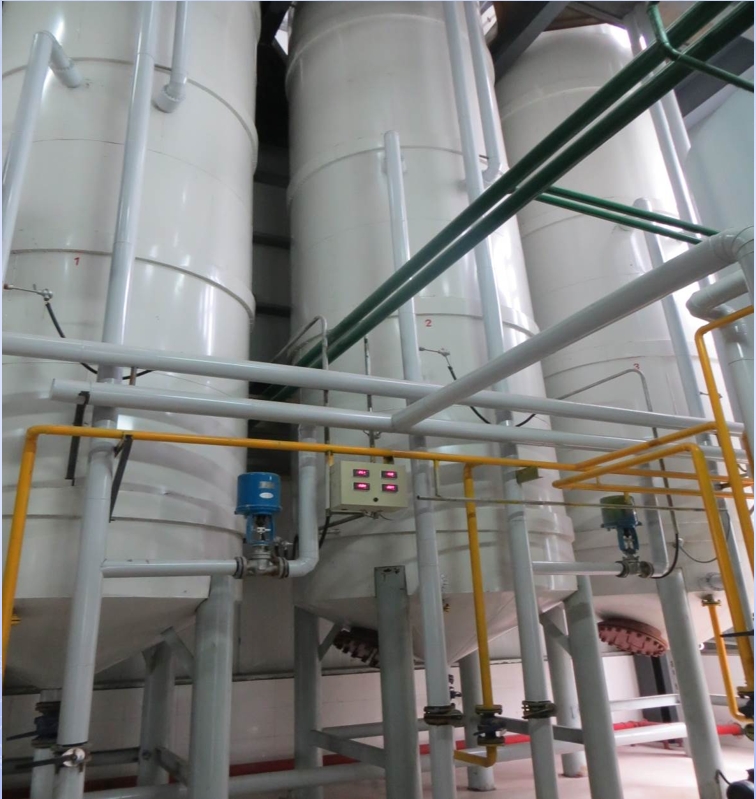
Crystallization TankFunction: Separates high-melting stearin from low-melting olein in palm oil via controlled cooling crystallization, enhancing purity and tailoring melting points for specific applications.II. Working PrincipleCrystal Melting:Heats refined palm oil to70°Cto dissolve existing crystals.Crystallization & Growth:Cools oil gradually viachilling coils(using cooling tower/chiller systems).Agitation ensures uniform crystal formation of stearin (high-melting fraction).Separation:Filters crystals using membrane filters;Olein(liquid) → Storage tanksStearin(solid) → Recovery vesselsIII. Technical FeaturesFeatureBenefitHigh-Efficiency CrystallizationChilling coils + agitation enable uniform cooling and crystal growth.Precision ControlAutomated temperature regulation (±0.5°C) optimizes crystal size/distribution.Energy-Saving DesignRecirculated cooling water/chilled brine reduces energy use by 20–30%.Integrated FunctionCompatible with filtration systems for continuous separation.IV. ApplicationsPalm Oil Fractionation:Olein: Used in frying oils, margarine.Stearin: Raw material for candles, soaps, and cocoa butter substitutes.Palm Oil Dewaxing:Removes wax crystals to improve clarity and cold stability.V. Key AdvantagesIncreases olein yield by≥15%vs. conventional methodsAchievesIV 56–59 (olein)andIV 32–35 (stearin)Reduces filtration cycle time by40%Meets ISO 22000 & HACCP standardsTechnical Specifications(Standard Unit):Capacity: 5–200 tons/batchCooling Rate: 0.1–0.5°C/minOperating Pressure: -0.05 to 0.3 MPaPower Consumption: 0.8–1.2 kW/tonEssential for producing specialty fats with customized melting profiles (MP 24°C olein; MP 50°C stearin).
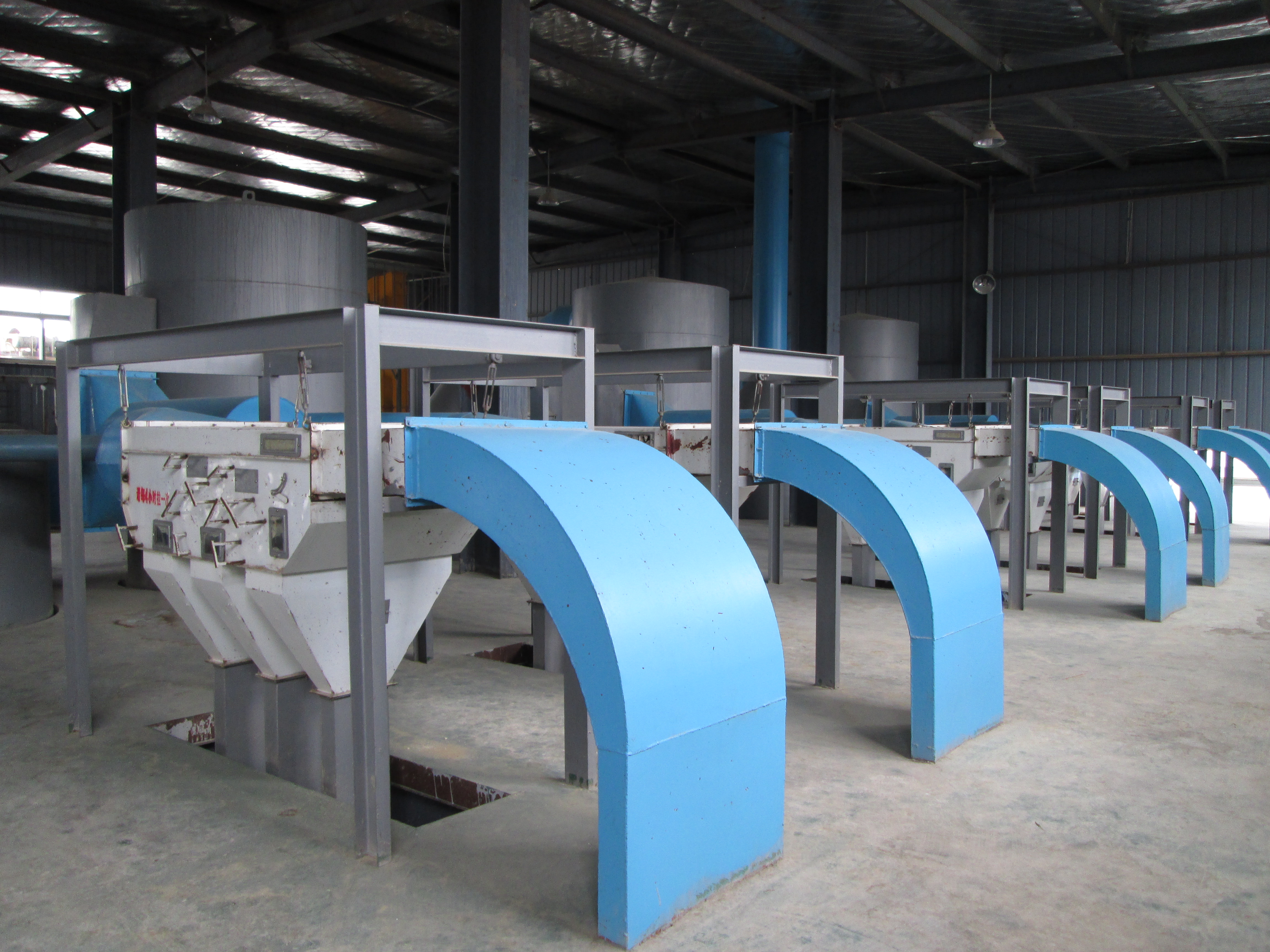
Product DescriptionThe Vibrating Cleaning Screen is a highly efficient and energy-saving screening equipment widely used in grain, oil, chemical, and food industries for raw material pretreatment. Utilizing high-frequency vibration, it separates impurities from raw materials based on differences in particle size, density, and shape, ensuring material purity and smooth downstream processing.Key FeaturesHigh-Efficiency Screening: High-frequency vibration enables rapid impurity separation with large processing capacity.Compact Structure: Space-saving design adapts to diverse production environments.User-Friendly Operation: Automated control system simplifies operation and maintenance.Durability: Constructed with wear/corrosion-resistant materials for extended service life.Adaptability: Adjustable vibration frequency/amplitude for various materials.Energy Efficiency: Low power consumption meets environmental standards.Working PrincipleComprising a vibrator motor, screen frame, mesh, and support structure, the equipment operates as follows:Material enters through the feed inletHigh-frequency vibration propels material across the screen surfaceParticles smaller than mesh openings pass through as productOversized impurities discharge separatelyApplicationsGrain Processing: Removes stones, mud, and metal from wheat, corn, riceOil Extraction: Pretreats oilseeds to improve extraction yieldChemical Industry: Purifies raw materials for quality controlFood Processing: Eliminates foreign matter to ensure safetyTechnical SpecificationsParameterValue/RangeScreening Accuracy0.5-10 mm (customizable)Capacity1-100 t/h (model-dependent)Vibration Frequency800-2000 rpm (adjustable)Motor Power1.5-7.5 kWScreen MaterialStainless steel/NylonMaintenance GuidelinesMonthly: Inspect screen mesh wear; replace damaged sectionsBi-weekly: Lubricate vibrator motor and bearingsShift-based: Clean residual material to prevent cloggingQuarterly: Verify electrical control system safetyConclusionWith its efficiency, durability, and energy-saving performance, the Vibrating Cleaning Screen is the optimal solution for raw material pretreatment across multiple industries. We deliver high-quality equipment to enhance productivity, reduce operational costs, and support sustainable production.